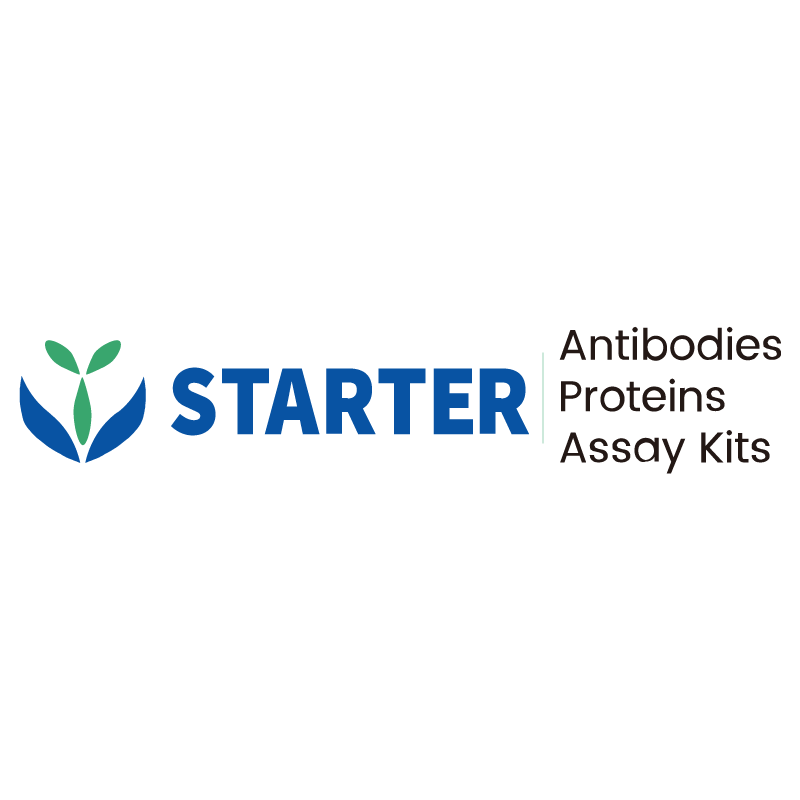WB result of Phospho-SHP-2 (Tyr542) Recombinant Rabbit mAb
Primary antibody: Phospho-SHP-2 (Tyr542) Recombinant Rabbit mAb at 1/5000 dilution
Lane 1: untreated NIH/3T3 whole cell lysate 20 µg
Lane 2: NIH/3T3 starve 18 hours, then treated with 50 ng/ml PDGF for 20 minutes whole cell lysate 20 µg
Secondary antibody: Goat Anti-rabbit IgG, (H+L), HRP conjugated at 1/10000 dilution
Predicted MW: 68 kDa
Observed MW: 68 kDa
Product Details
Product Details
Product Specification
| Host | Rabbit |
| Antigen | Phospho-SHP-2 (Tyr542) |
| Synonyms | Tyrosine-protein phosphatase non-receptor type 11; Protein-tyrosine phosphatase 1D (PTP-1D); Protein-tyrosine phosphatase 2C (PTP-2C); SH-PTP2 (SHP-2; Shp2); SH-PTP3; PTPN11; PTP2C; SHPTP2 |
| Immunogen | Synthetic Peptide |
| Location | Cytoplasm, Nucleus |
| Accession | Q06124 |
| Clone Number | S-1254-13 |
| Antibody Type | Recombinant mAb |
| Isotype | IgG |
| Application | WB, IP |
| Reactivity | Hu, Ms, Rt |
| Positive Sample | NIH/3T3 treated with PDGF, C6 |
| Predicted Reactivity | Ck |
| Purification | Protein A |
| Concentration | 0.5 mg/ml |
| Conjugation | Unconjugated |
| Physical Appearance | Liquid |
| Storage Buffer | PBS, 40% Glycerol, 0.05% BSA, 0.03% Proclin 300 |
| Stability & Storage | 12 months from date of receipt / reconstitution, -20 °C as supplied |
Dilution
| application | dilution | species |
| WB | 1:5000 | Ms, Rt |
| IP | 1:50 | Hu |
Background
SHP-2, also known as PTPN11, is a non-receptor protein tyrosine phosphatase containing two Src homology 2 (SH2) domains and a phosphatase domain. Phosphorylation at Tyr542 and another site, Tyr580, in the C-terminal tail are crucial for SHP-2 activation and function as binding sites for proteins with SH2 domains, such as GRb2. SHP-2 is a key regulator in multiple signaling pathways, including the Ras-Raf-MEK-ERK, JAK-STAT, PI3K-AKT-mTOR, and PD-1/PD-L1 pathways. It can act as both an oncogene and a tumor suppressor, depending on the cellular context. SHP-2 plays a role in various cellular processes such as cell growth, differentiation, mitotic cycle, and oncogenic transformation. It is widely expressed in most tissues and is involved in signal transduction from the cell surface to the nucleus. SHP-2 is involved in regulating immune cell functions in the tumor microenvironment and is a target for cancer immunotherapy. It plays a role in the downstream signaling of immune-inhibitory receptors such as PD-1, which is a key target for cancer immunotherapy.
Picture
Picture
Western Blot
WB result of Phospho-SHP-2 (Tyr542) Recombinant Rabbit mAb
Primary antibody: Phospho-SHP-2 (Tyr542) Recombinant Rabbit mAb at 1/5000 dilution
Lane 1: C6 whole cell lysate 20 µg
Secondary antibody: Goat Anti-rabbit IgG, (H+L), HRP conjugated at 1/10000 dilution
Predicted MW: 68 kDa
Observed MW: 68 kDa
IP
Phospho-SHP-2 (Tyr542) Recombinant Rabbit mAb at 1/50 dilution (1 µg) immunoprecipitating Phospho-Stat3 (Tyr705) in 0.4 mg NIH/3T3+starved for 18 hours then +PDGF-treated (50ng/ml, 20 minutes) whole cell lysate.
Western blot was performed on the immunoprecipitate using Phospho-SHP-2 (Tyr542) Recombinant Rabbit mAb at 1/50000 dilution.
Secondary antibody (HRP) for IP was used at 1/1000 dilution.
Lane 1: NIH/3T3+starved for 18 hours then +PDGF-treated (50ng/ml, 20 minutes) whole cell lysate 40 µg (Input)
Lane 2: Phospho-SHP-2 (Tyr542) Recombinant Rabbit mAb IP in NIH/3T3+starved for 18 hours then +PDGF-treated (50ng/ml, 20 minutes) whole cell lysate
Lane 3: Rabbit monoclonal IgG IP in NIH/3T3+starved for 18 hours then +PDGF-treated (50ng/ml, 20 minutes) whole cell lysate
Predicted MW: 68 kDa
Observed MW: 68 kDa


